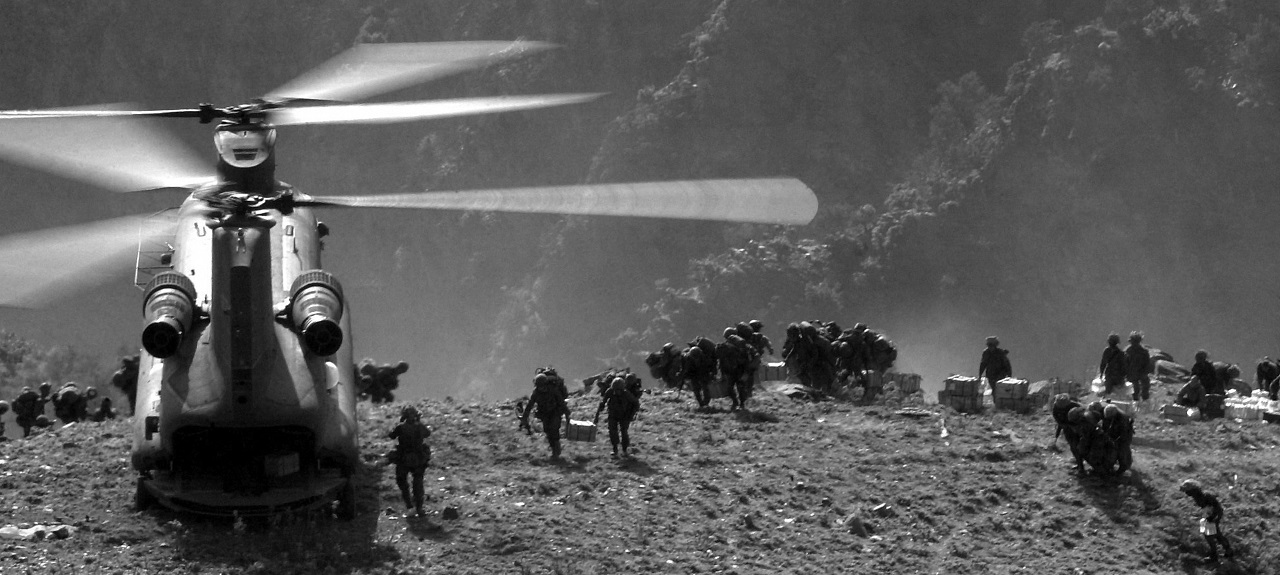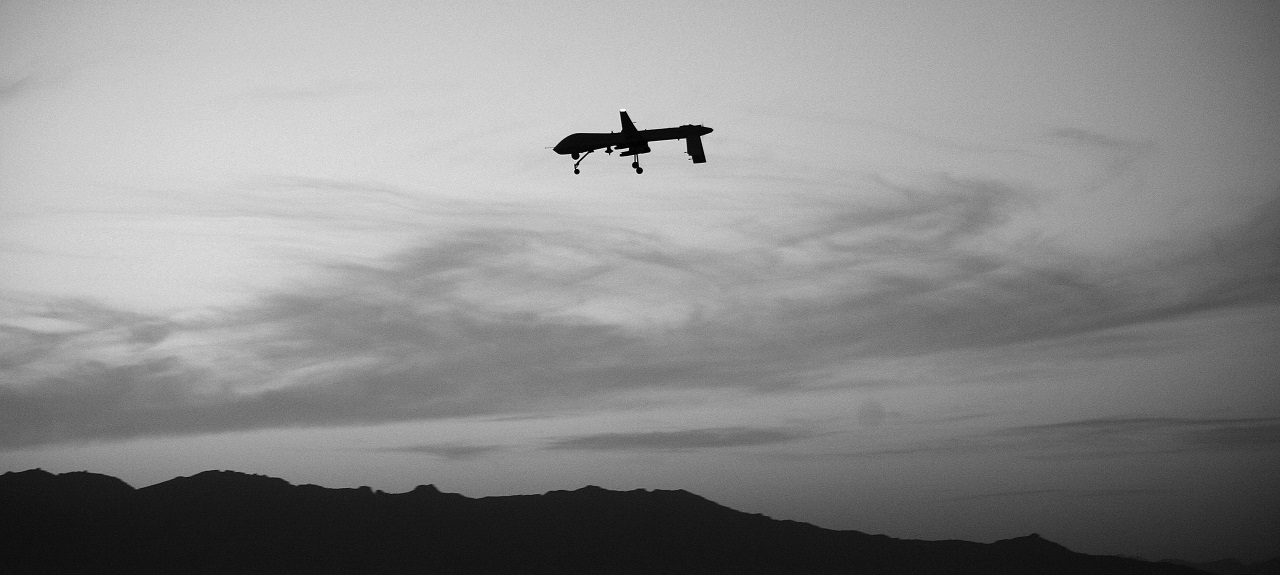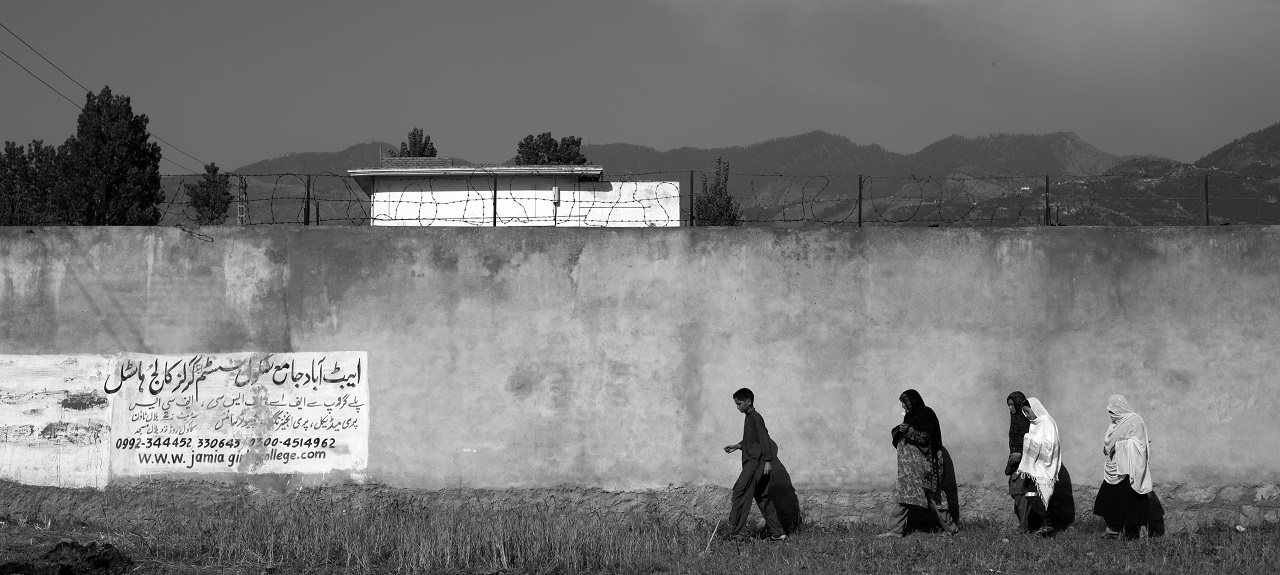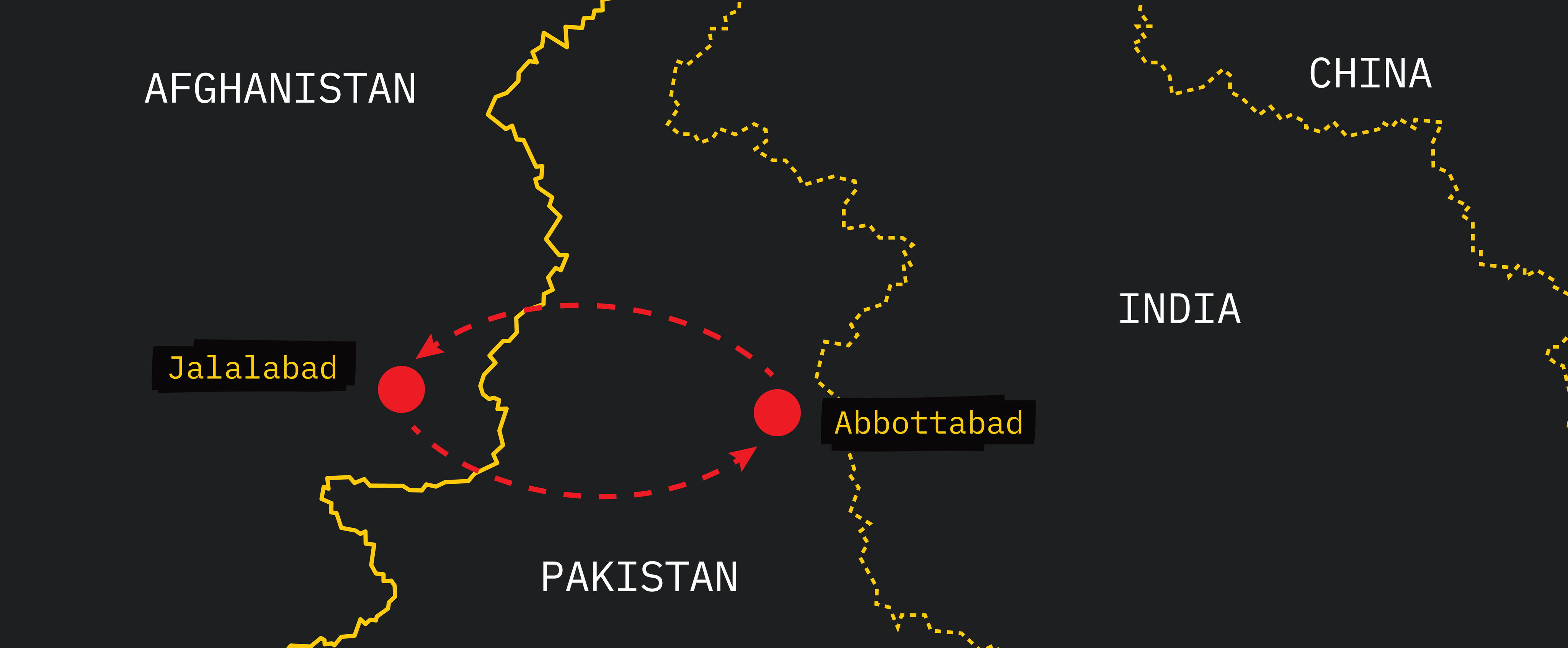Revealed: The Hunt for Bin Laden
This online collection of stories was adapted from the 9/11 Memorial Museum’s special exhibition Revealed: The Hunt For Bin Laden. The supporting lesson plans explore what the U.S. government knew about Osama bin Laden and al-Qaeda in the years prior to the 9/11 attacks, and what our government was doing during the nearly 10-year period between 9/11 and the 2011 raid to find bin Laden.

Hijacked Flight 175 about to hit the South Tower, September 11, 2001. Photograph by Sean Adair, Reuters.
Warning Signs
Osama bin Laden, a wealthy Saudi, founded the terrorist organization al-Qaeda in 1988 to mobilize Arab fighters on the Afghan side of the Soviet-Afghan War (1979–1989). Following the Soviet withdrawal from Afghanistan, bin Laden sought to establish al-Qaeda’s military role in the Middle East. When American troops were deployed to Saudi Arabia for the Gulf War (1990–1991), bin Laden saw an opportunity. He denounced Western influence, particularly American influence, in Muslim-majority countries. In 1996, bin Laden declared a jihad, a religiously sanctioned war, against the United States, leading to violent al-Qaeda attacks on American interests overseas. Ultimately, bin Laden believed a devastating strike on American soil would convince the U.S. to withdraw from the Muslim world.
U.S. intelligence and law enforcement agencies had been monitoring bin Laden and al-Qaeda during the 1990s, warning senior government officials of a growing threat. Even so, most senior U.S. policymakers did not consider al-Qaeda a priority.

Helicopter at Tora Bora. Courtesy of the Defense Intelligence Agency (DIA).
First Boots On The Ground
On September 17, 2001, U.S. President George W. Bush authorized the CIA to launch operations in Afghanistan against al-Qaeda and its ally, the ruling Taliban government. Nine days later, a small unit of CIA personnel arrived to strengthen alliances with Afghan militias and gather intelligence.
The U.S. military began operations in Afghanistan on October 7, 2001, as part of Operation Enduring Freedom. By early November, approximately 100 CIA officers and 300 U.S. Special Forces were on the ground. International partners also provided troops.
By December 2001, intelligence and military forces had tracked Osama bin Laden to the Tora Bora cave complex in Afghanistan’s Spīn Ghar mountain range. During a weeks-long battle with al-Qaeda, bin Laden escaped.

Predator drone in Afghanistan. Photograph by Veronique de Viguerie, Getty Images.
Forging A New Strategy
Osama bin Laden escaped from Tora Bora in December 2001, leaving no trace.
While the hunt for bin Laden continued for years, it was not the U.S. government’s sole priority. America’s strategy to find bin Laden now hinged on tracking al-Qaeda’s global network.
More intelligence and better integration were key to fighting al-Qaeda. Intelligence and law enforcement officers now deployed alongside troops overseas to help plan special operations. Raids increased in frequency and importance. Materials recovered from these missions, along with aerial imagery, information from detainee interrogations as well as local allies, and other sources, produced a flood of intelligence, all of which needed to be shared and analyzed rapidly.
When a lead to bin Laden’s location finally emerged in 2010, the U.S. applied a decade of knowledge and experience against the ultimate high-value target.

Osama bin Laden’s compound in Abbottabad, Pakistan, days after the raid, May 3, 2011. Collection 9/11 Memorial Museum, Gift of Warrick Page for the New York Times.
Following A Lead
In August 2010, U.S. intelligence agencies tracked a suspected al-Qaeda courier, Abu Ahmad al-Kuwaiti (whose real name was Ibrahim Saeed Ahmed), to a compound in Abbottabad, Pakistan. Al-Kuwaiti lived there with his brother, also an al-Qaeda messenger, and their families. Another family with many women and children lived in the compound, too.
For intelligence analysts, conditions at the compound strongly suggested that someone important was hiding there. Tight security guided the residents’ lives. They had no telephone or Internet connection. They burned their garbage. The surrounding walls, topped with barbed wire, were uncommonly high. A third-floor terrace in the main building had been walled off, obscuring a scenic view.
Meanwhile, a figure dubbed the Pacer took frequent walks in an outdoor, covered area. Analysts believed that the compound housed a high-value target. Could it be bin Laden?

Map showing the locations of the U.S. base in Jalalabad, Afghanistan, and Osama bin Laden’s hideout in Abbottabad, Pakistan.
The Debate, The Plan, The Raid
In late 2010 and early 2011, the U.S. intelligence community tried to confirm its suspicions about the Abbottabad compound. U.S President Barack Obama and his national security team debated how to act on the lead in the face of continuing uncertainty and risk.
Among the options considered, a special operations raid emerged as the best opportunity to confirm Osama bin Laden’s presence at the compound. President Obama ordered planning for the raid while continuing to evaluate the risks with his team. After asking his advisers for input, he approved U.S. Naval Special Warfare Development Group (DEVGRU), also known as SEAL Team Six, to carry out the operation. The SEALs prepared for their mission by conducting rehearsals at replica compounds built in Nevada and North Carolina.
President Obama formally authorized the raid, which occurred on May 1, 2011 (May 2, 2011, Pakistan Standard Time).

Newspapers at a stall in Lahore, Pakistan, displaying news of the death of Osama bin Laden, May 3, 2011. Photograph by Arif Ali, AFP, Getty Images.
A Story With No End
The raid was the culmination of years of risk, involving countless individuals across dozens of U.S. and allied government agencies. After the operation’s conclusion, Osama bin Laden’s death spurred headlines globally. It was a defining moment for millions of people.
However, the death of bin Laden offers no tidy conclusion to the story of al-Qaeda or of terrorism generally. His successors and others remain faithful to his vision of a religious war. Al-Qaeda is active and continues to plan attacks, while affiliated organizations and radicalized individuals plot their own strikes.
Bin Laden’s fanatical beliefs did not die with him. Until people are no longer willing to kill or die for these ideas, the threat will persist. Even so, a determined network of intelligence, military, and law enforcement officers across the globe, well-practiced in their methods, works tirelessly to counter the terrorist threat.
